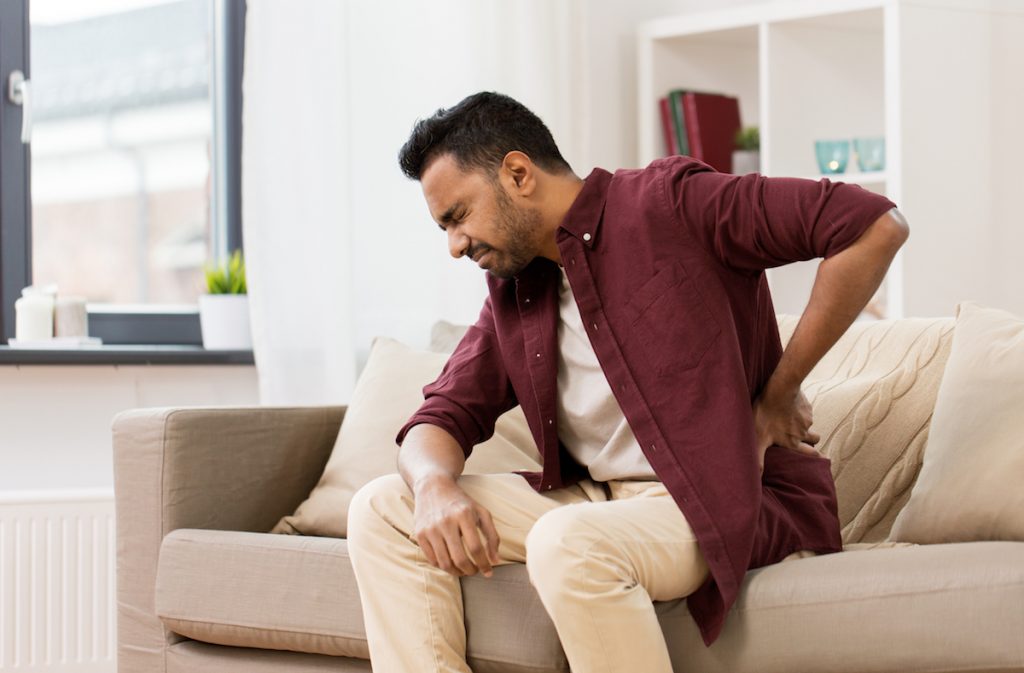Do you experience high levels of pain? Has it been persisting for months or maybe years?
Do you feel like just stopping, with the pain crippling you daily?
Chronic Pain can only be understood if you’re living it. Simple movements in your day-to-day life, such as sitting and standing, feel unbearable. Your sleep is disrupted, you feel less energetic.
Does this sound like you?
Ensuring you get on top of managing your chronic pain is really important, as it can also have a significant impact on your family too. Roll on effects such as a reduction in your earnings if you stop work, can lead to financial pressures and friction. It can also disrupt your relationships due to increased conflict or feeling poorly understood. Severe cases also experience symptoms of anxiety or depression. You don’t want this to be you…..so what can you do?

So how do you keep going when the pain tells you to stop?
You may have heard some people resorting to medical and surgical interventions. Whilst they can be effective, depending on your situation they aren’t always an option. Other options such as medication will only offer short-term relief, and can come with a list of side effects.
Expert research has consistently shown that taking an active approach to managing your chronic pain will give you the greatest gains. Professional support from an expert will teach you the techniques you need to manage the pain and its flow on effects.
It’s probably obvious to you that your chronic pain has lead to a reduction in your activity levels. Maybe you can no longer play with your kids for as long, or you can’t do all the housework in an afternoon. You might find due to the pain that you do fewer enjoyable activities and don’t try new things.
Good Days vs. Bad Days – the Vicious Cycle
You may find yourself going through cycles. You can get caught in a cycle of “good days” where you might push yourself, and bad days where the pain is too great to do anything. But as you push yourself to do too much on a good day, you put a lot of strain on your body as your fitness levels are not what they used to be. Similarly on a bad day, you feel the need to rest more, so your body becomes “deconditioned” with stiffer joints and weaker muscles present. The next time you go to do an activity, you’re more likely to exacerbate the pain. It becomes a vicious cycle.
Pacing Yourself
Pacing yourself is the best way to manage your chronic pain. By pacing your activities, you will:
- Increase the amount of activity you can do over time
- Spend less time needing to rest
- Pain will not dictate your activity or control you – you will control you!
How to Pace Yourself
- Work out what your body tolerance is. e.g. either time yourself or work out how many times you can do something before you reach your limit.
- Each time you do that activity, gradually increase the amount you do at a steady rate.
- Break up tasks into smaller more manageable parts.
- As you progress, reward yourself with a little something.
- If you’re taking medication, speak with your doctor about the frequency and effectiveness
- Take small breaks, or change your activity regularly.
Ensure you stop and think when pacing yourself. Over-doing an activity on a “good pain day” is not good for you, and remember to not take on large tasks all at once. Remember to be kind to yourself and don’t have too high expectations of what your body can tolerate. Reach out to a professional if you need some support or guidance – sometimes you just need to be given the tools to learn to self-manage the pain in the future.
Written by Rebecca Deane – Clinical Psychologist – www.creatingchange.net.au

